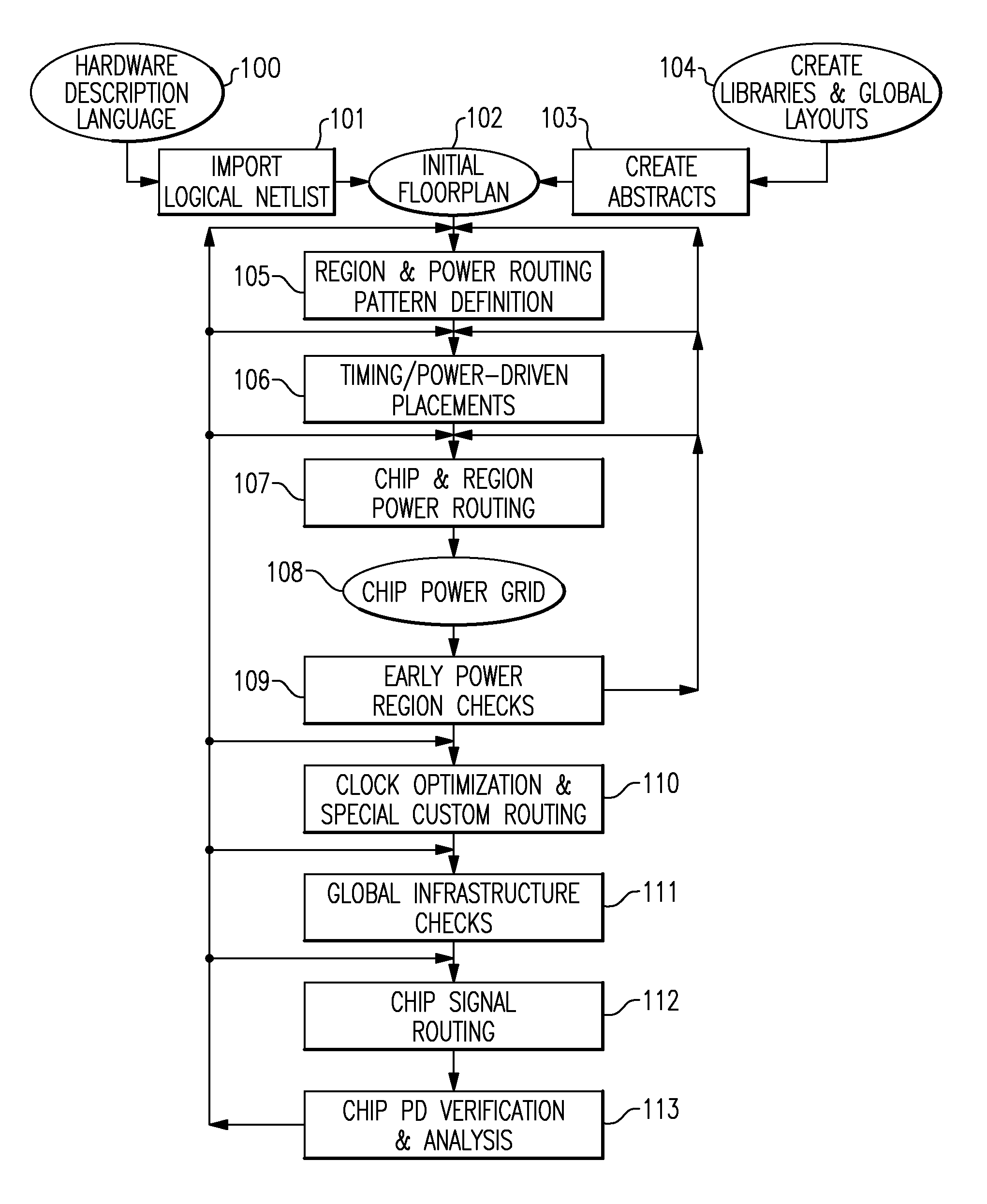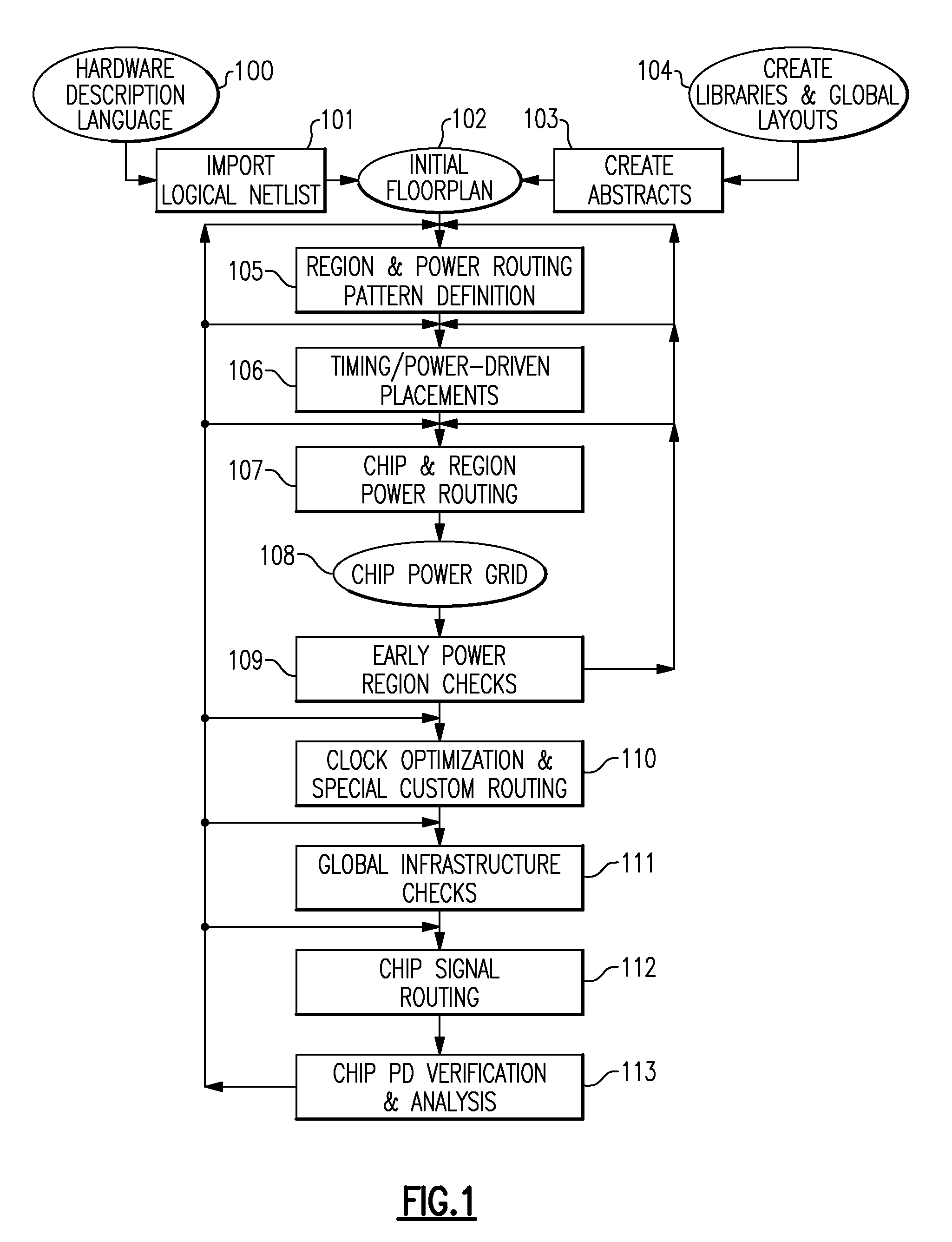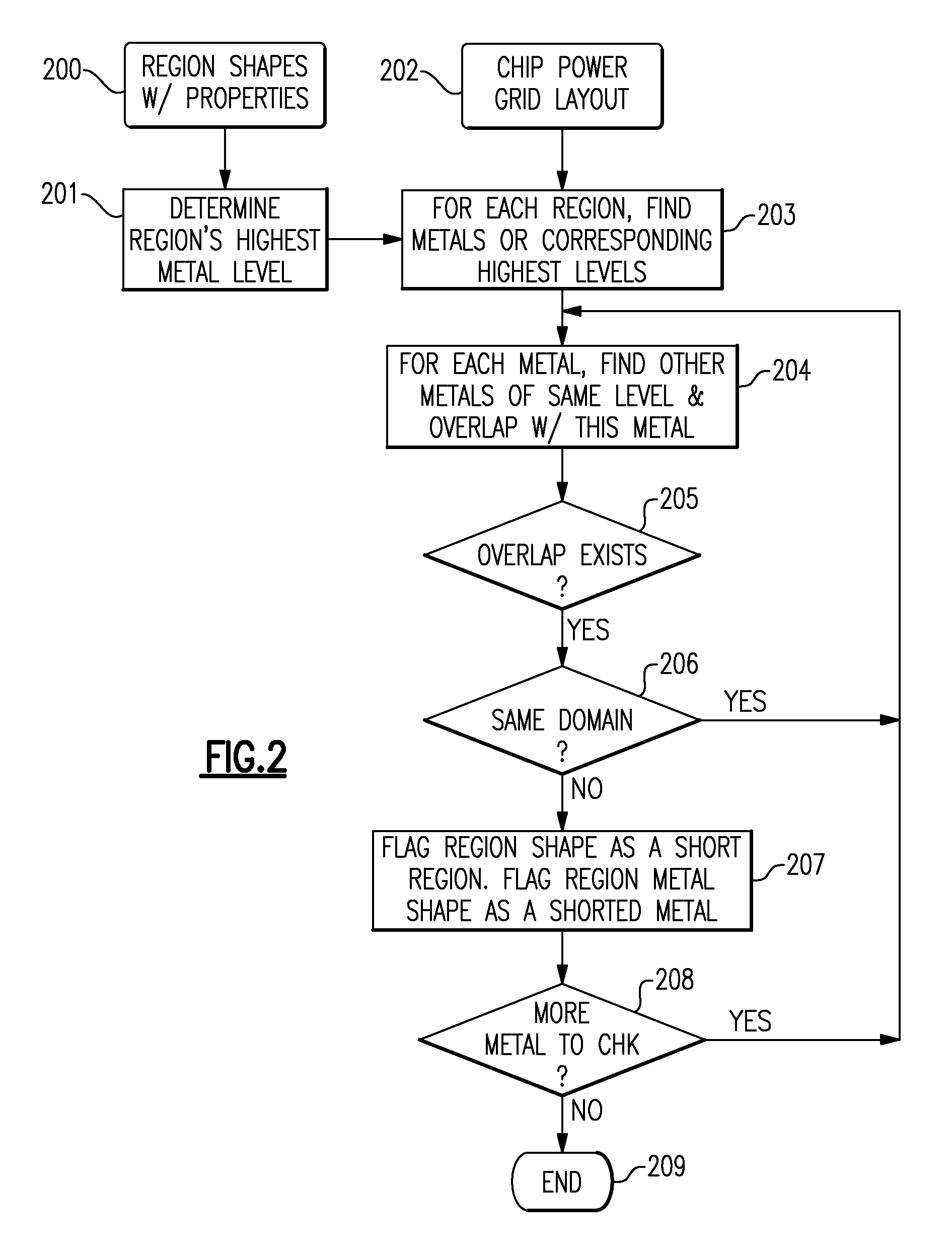Method and Apparatus for Efficient Power Region Checking of Multi-Supply Voltage Microprocessors
- Summary
- Abstract
- Description
- Claims
- Application Information
AI Technical Summary
Benefits of technology
Problems solved by technology
Method used
Image
Examples
Embodiment Construction
[0035]Turning now to FIG. 1, before a chip power grid 108 is created, an initial chip floor plan 102 is laid out. Custom abstract macros are created 103 and placed in the chip floorplan 102 using circuit libraries and existing global layouts 104. The floor plan 102 also contains abstract connectivity for the circuits of the floor plan imported 101 from a logical chip description 100. Floor plan power regions are defined 105, and timing-driven placements are implemented 106 to provide a skeleton from which the full-chip power routing process 107 can be used to create the chip power grid layout 108. In accordance with the present invention, after the power routing step, early power region checks 109 are performed. These tests use the early chip floor plan and power grid to detect physical power connection errors associated with voltage region designs. The tasks remaining after the early power region checks include: clock tree synthesis, optimization, and special custom routing 110; gl...
PUM
 Login to View More
Login to View More Abstract
Description
Claims
Application Information
 Login to View More
Login to View More - R&D
- Intellectual Property
- Life Sciences
- Materials
- Tech Scout
- Unparalleled Data Quality
- Higher Quality Content
- 60% Fewer Hallucinations
Browse by: Latest US Patents, China's latest patents, Technical Efficacy Thesaurus, Application Domain, Technology Topic, Popular Technical Reports.
© 2025 PatSnap. All rights reserved.Legal|Privacy policy|Modern Slavery Act Transparency Statement|Sitemap|About US| Contact US: help@patsnap.com



